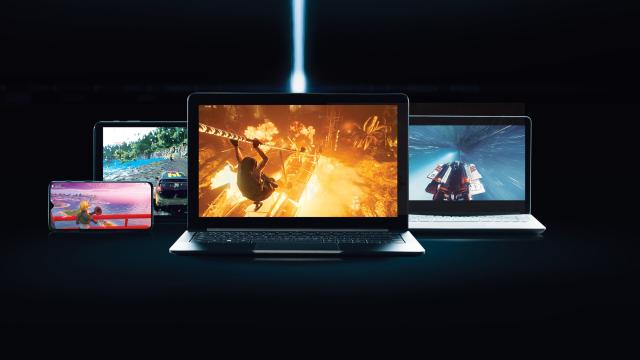You don’t need a high-end PC to play virtual reality games anymore. Shadow, a 5-year-old cloud gaming platform, is launching what it calls a “VR Exploration Program””a fancy way of saying a closed beta for people who want to play VR without splurging on a gaming PC.
Shadow is a service similar to GeForce Now and Stadia, except that it’s not a dedicated gaming platform. It’s a virtual computer that you connect to remotely, similar in the way remote desktop software works.
You can install any game you already own on Steam, Epic, Origin, Uplay, etc., onto your virtual machine, in addition to any other non-gaming software programs you use, such as Photoshop. You don’t have to buy a separate copy of your game like you do on Stadia, and you don’t have to worry about publishers pulling their games from the platform like GeForce Now. Shadow is compatible with Macs, too.
Shadow’s beta applications will open on March 13, with a second round following on March 24. The program itself will start on April 1 and eligibility will depend on a few criteria. Anyone who wants to take part in the closed beta should have: a fibre connection higher than 100Mbps/download and 20Mbps/upload; a ping less than 15ms; and a 5GHz Wi-Fi router (although a wired connection will offer more stability).
If you have all of that, you’re a qualified candidate, but the program is only compatible with Oculus Quest at this time, and, of course, you need to own at least one VR game. Shadow didn’t say how many testers will be admitted to the beta.
Editor’s Note: It’s currently unclear if Shadow will launch in Australia.
In addition to adding VR compatibility, Shadow has redesigned its subscription model and added support for Android mobile, tablet, and TV devices. Its base tier, Shadow Boost, starts at $US11.99 ($18)/month for a 12-month subscription and offers up to a 4K resolution on a remote PC with a GTX 1080 equivalent or better graphics card, a 3.4 Ghz (4-core) or equivalent processor, 12GB RAM, and 256GB of storage.
The middle tier, Shadow Ultra, is $US24.99 ($38)/month for a 12-month subscription and offers up to 4K with ray tracing, an RTX 2080 or equivalent graphics card, a 4.0 Ghz (4-core) or equivalent processor, 16GB RAM, and 512GB storage.
The top tier, Shadow Infinite, is $US39.99 ($62)/month for a 12-month subscription and also offers 4K with ray tracing with a Titan RTX or equivalent graphics card, a 4.0Ghz (6-core) or equivalent processor, 32GB RAM, and 1TB of storage. All tiers have the option to upgrade storage, and are compatible on the same devices.
The note on equivalent graphics cards and processors is interesting, especially at the lowest tier. Since ray tracing is not available on Shadow Boost, it’s possible that your remote rig will have an AMD GPU, like the Radeon RX 5700 or RX 5600 XT, although the RX 5600 XT is closest to the GTX 1080 in terms of performance”albeit slower, but just barely. The mid and top tiers would have a ray tracing enabled card from Nvidia, because those packages offer ray tracing. Nvidia is the only company that currently offers ray tracing cards. The middle tier might have an RTX 2080 Super or RTX 2070 Super instead, and the top tier an RTX 2080 Ti instead. Any difference in performance will likely be a few frames, but input latency is the larger concern with cloud gaming.
As for the processors, it looks like Shadow is offering budget-level CPUs. A 4-core or equivalent processor would be something like the 9th-gen Intel i3-9350KF or 8th-gen Intel Core i3-8350K, since they have 4 cores. If we compare performance instead of cores, AMD’s Ryzen 5 2600X is of equivalent performance compared to those two Intel processors, but its base clock is too high for the lowest tier.
But you might be someone who isn’t worried about those kinds of specifics, in which case none of that matters. All that matters is if you’re paying 12 bucks a month for the lowest tier”it’ll take you around eight years of monthly payments to equal the current cost of building a gaming PC on a budget. That’s a lot of money saved on a PC that would almost certainly be obsolete before those eight years are up.
You can sign up for Shadow’s VR closed beta here. We plan to put it to the test to see how Shadow’s cloud gaming service stacks up to Stadia and GeForce Now.
